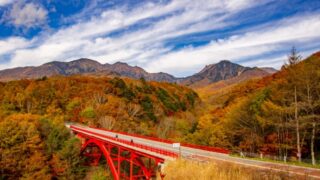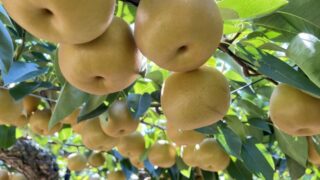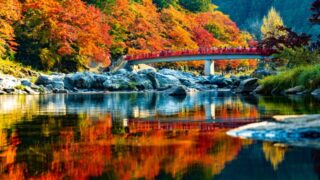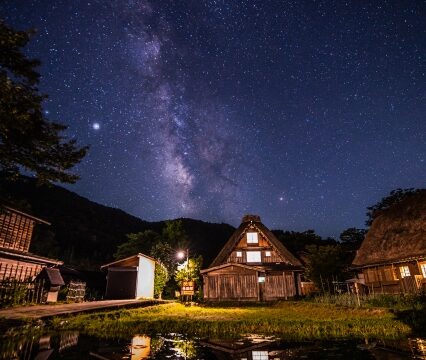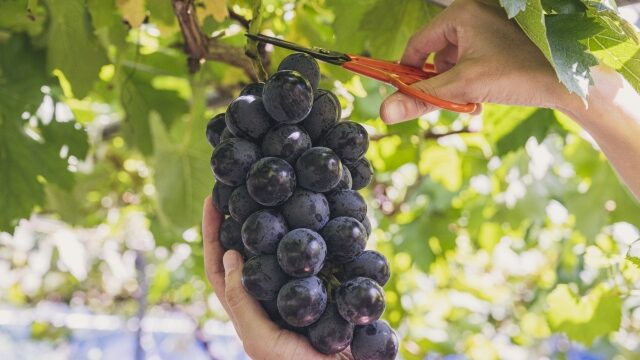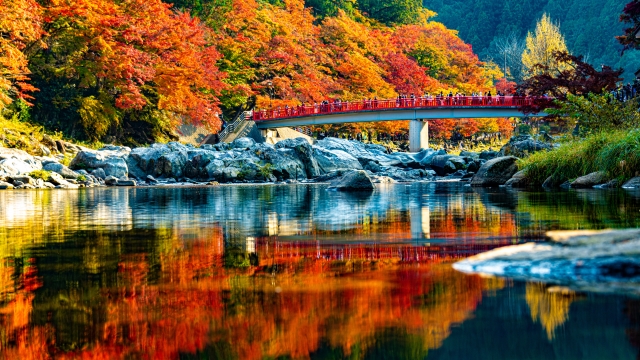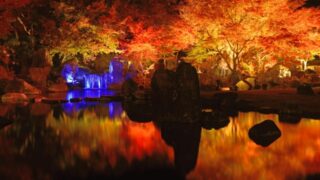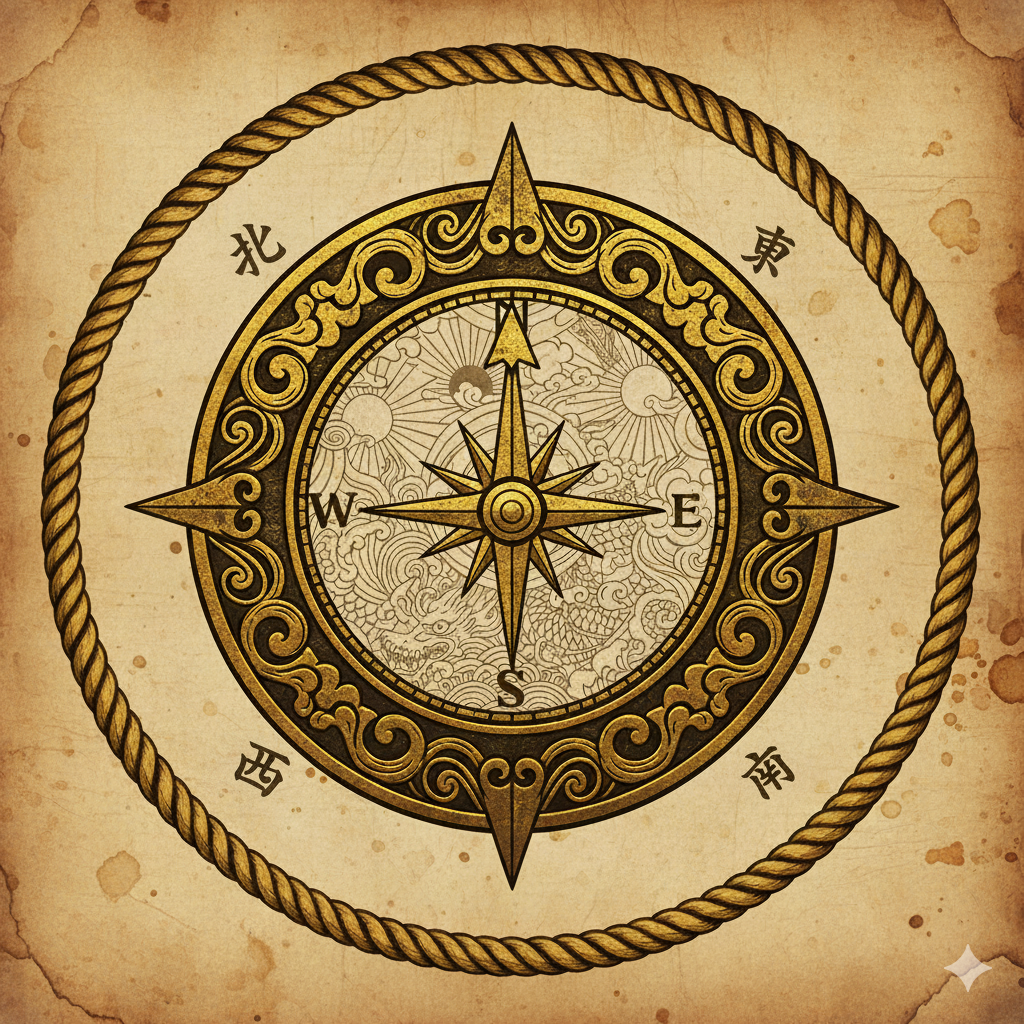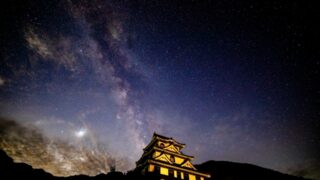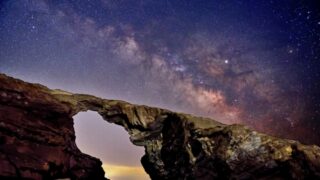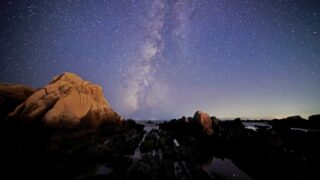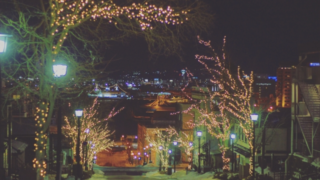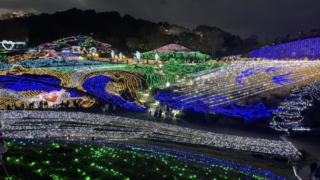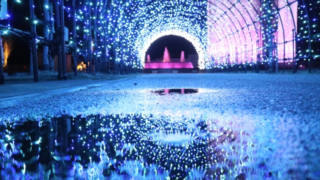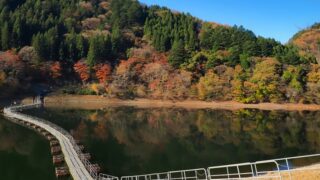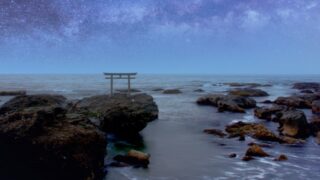As autumn deepens, the suburbs and mountainous areas of Kanto are painted with brilliant fall foliage. The 2025 autumn foliage season runs from late October to early December, with colors gradually progressing down the mountains according to elevation. Why not explore the famous autumn spots at your own pace in a camper van this year?
Fall foliage hunting by camper van offers special charms: you can enjoy mist-wrapped ravines in the early morning or the brocade reflected on lake surfaces at sunset without time constraints. If you stay overnight at roadside stations or RV parks, you can move to the next spot immediately the next morning. The luxury of sipping warm coffee inside your vehicle while gazing at the fall colors through the window is a unique camper van experience.
This article introduces 8 autumn foliage spots easily accessible by camper van from the suburbs and mountainous areas of Tokyo, Kanagawa, Chiba, and Saitama. We provide detailed explanations of parking information, road conditions, and highlights for each spot, so please use this for your travel planning.
🍁 2025 Kanto Autumn Foliage Peak Calendar
October
Week 1
Week 2
Week 3
Week 4
Week 1
Week 2
🚐 Tips for Camper Van Use
Early Morning Photography
Stay overnight at the site for peaceful foliage photography avoiding crowds
Stargazing & Foliage
Enjoy stargazing at mountain sites with minimal light pollution
Relax After Hot Springs
Rest comfortably in your vehicle after bathing without travel worries
Follow the Foliage Front
Flexible travel from mid-October to early December matching peak seasons
【Chiba Prefecture】Late Autumn Colors in Boso’s Hidden Gem
Awamata Falls and Ravine Beauty “Yoro Ravine”
Yoro Ravine, known as Boso’s premier autumn foliage spot, reaches its peak from late November to early December. Along the Yoro River, the approximately 3km ravine is covered with diverse deciduous trees including maple, sumac, and oak, creating gradations of red, yellow, and orange that color the stream.
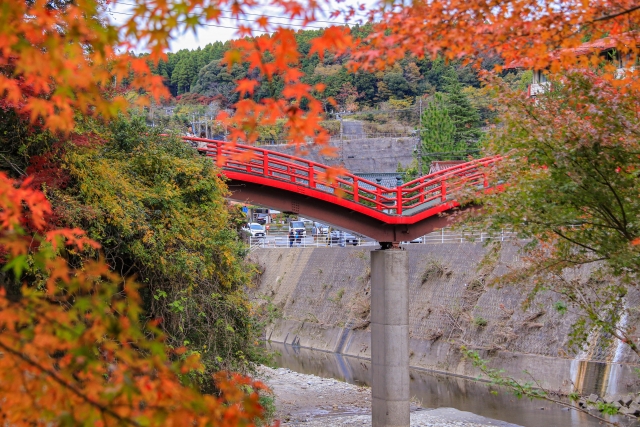
The main highlight is “Awamata Falls,” which spans 100m in length. The gently cascading waterfall combined with autumn colors creates a picture-perfect scene. From the waterfall observation deck, you can overlook the entire foliage-wrapped falls, making it an excellent photography spot. From late November to early December, nighttime illumination is held along Nakaze Promenade and Oikawa Crossroads, offering fantastic autumn foliage viewing at night.
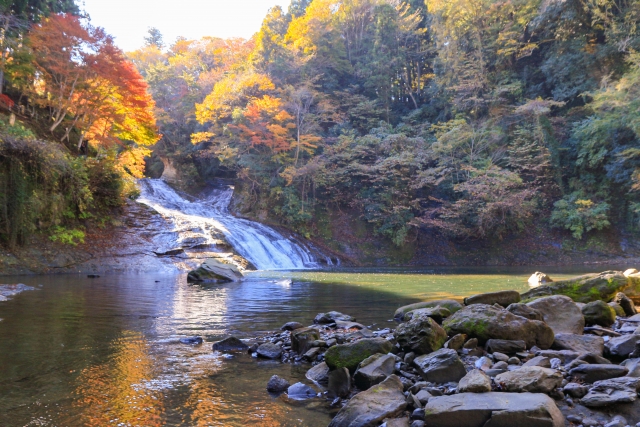
Access by camper van is about 30 minutes from Ken-O Expressway Ichihara-Tsurumai IC. The Awamata Falls parking lot (paid, about ¥500) has space for regular cars and medium-sized vehicles. Along the ravine are hot spring resorts of Yoro Ravine Onsen-kyo with abundant day-trip bathing facilities. We recommend healing fatigue in hot springs after foliage hunting. Bird songs echo around the area, and if lucky, you might spot Japanese macaques inhabiting the Boso hills from a distance.
Driving Luxury on Maple Road “Lake Kameyama”
Lake Kameyama, known for having the latest autumn foliage season in Kanto, can be enjoyed from mid-November to early December, and even until mid-December near Jizodo. The artificial lake’s complex inlets are painted with patchwork patterns of maple, ginkgo, sawtooth oak, and metasequoia in red, yellow, and green.
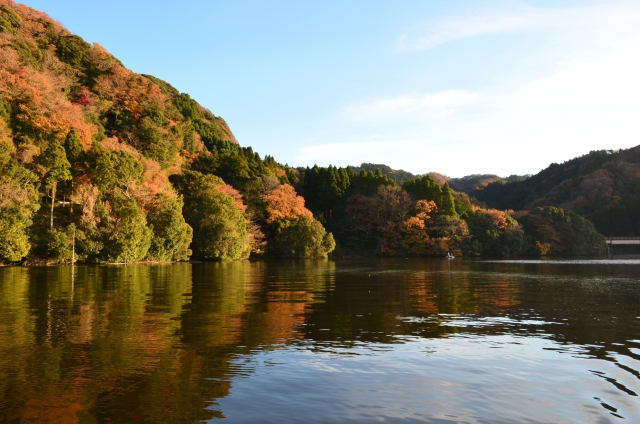
Prefectural Road 182 running north-south along the lake, commonly called “Maple Road,” features approximately 1,000 maple trees forming a tunnel over about 10km. Driving in a camper van offers an excellent drive route to enjoy the autumn tunnel from your windows. From the gazebo at Suiten-gu Park on the lakeside, you can overlook the entire lake, with the red torii gate floating on the water surface being a popular Instagram-worthy photo spot.
Accessible about 40 minutes from Tateyama Expressway Kimitsu IC. Around Lake Kameyama are numerous free parking lots where camper vans can park safely. During foliage season, the “Kameyama Autumn Festival” is held, with 360-degree foliage cruises on sightseeing boats available. Waterfowl visit the lake surface, and birdwatching is possible in surrounding forests. Japanese macaques unique to the Boso hills live in nearby mountains and occasionally appear in villages.
【Saitama Prefecture】Chichibu Ravines and Musashi’s Little Kyoto
Iwadatami and Foliage Performance “Nagatoro Ravine”
Nagatoro Ravine along the Arakawa River is one of Kanto’s premier autumn spots, starting to color from early November with peak from mid to late November. The main feature is the rock formations called “Iwadatami” (rock shelves) designated as a national natural monument. The contrast between these white rock formations and autumn leaves of maple, Japanese maple, sawtooth oak, and oak creates breathtaking beauty.
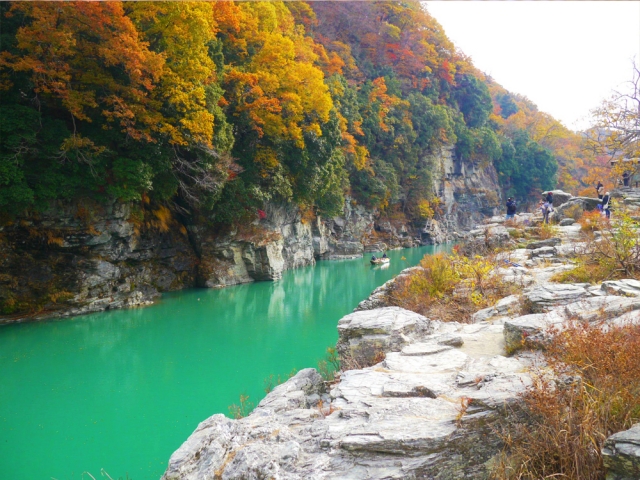
River boat rides viewing foliage are popular, with ravine beauty seen from water being exceptional. For walking exploration, the Iwadatami Promenade allows enjoying foliage reflected on the water surface. At night, Tsuki no Ishi Maple Park holds illuminations, with foliage emerging from darkness creating a fantastic atmosphere.
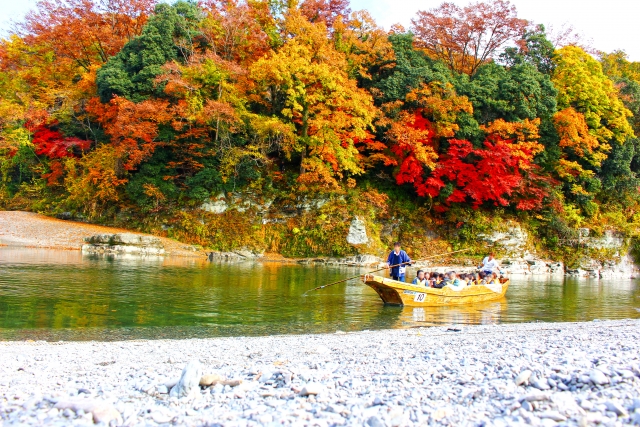
About 25 minutes from Kan-Etsu Expressway Hanazono IC. Within Nagatoro Town are many free parking lots and municipal parking lots, creating an easy environment for relatively large camper vans to park. During foliage season, the “Nagatoro Autumn Leaves Festival” is held throughout November, with local gourmet food stalls and specialty product sales. Wild birds like kingfishers inhabit the ravine, with Japanese macaques and deer living in surrounding mountains, though rarely appearing before people. Early morning walks may offer quiet encounters with wildlife.
Stepping Stone Crossing Secret Beauty “Ranzan Ravine”
Ranzan Ravine in the Hiki Hills near central Tokyo is a quiet autumn spot praised as “Musashi’s Little Kyoto.” From mid-November to early December, rock formations along the Tsuki River, clear streams, and trees including maple and beautyberry create magnificent coloring scenery.
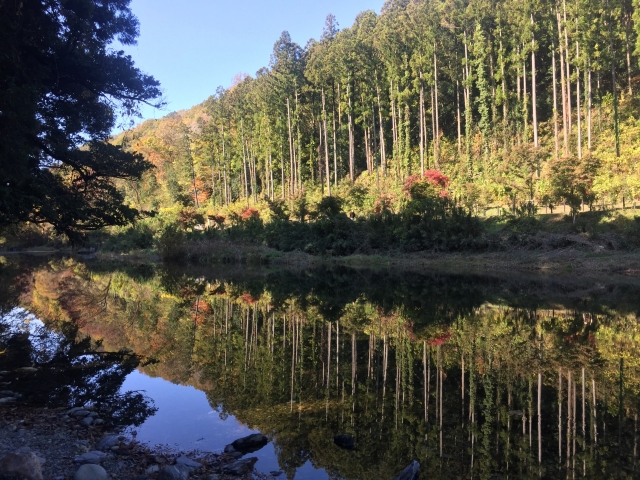
This ravine’s charm is well-maintained walkways allowing waterside approach. Walking paths with stepping stones let you enjoy foliage reflected on water surfaces up close, while observation decks offer panoramic views for diverse viewing angles. From mid-November to early December, the “Ranzan Ravine Autumn Leaves Festival” is held with illuminations and events showing different expressions day and night.
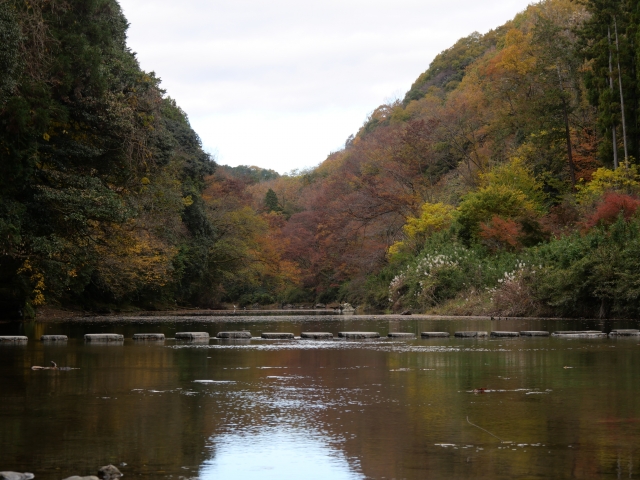
About 20 minutes from Kan-Etsu Expressway Higashi-Matsuyama IC. The town-operated parking lot near the ravine entrance is paid but camper vans can park. However, walking paths have unstable footing in some areas, so visiting with comfortable shoes is recommended. Wild birds like kingfishers can be observed by the river, with squirrels and flying squirrels inhabiting surrounding deciduous forests. In quiet early mornings, chances of wildlife encounters increase.
【Tokyo】Surrounded by Okutama’s Magnificent Nature
Autumn Panorama Reflected on Lake Surface “Lake Okutama”
Lake Okutama, one of Tokyo’s premier autumn foliage spots, sees surrounding mountains dyed red and yellow from early to late November, with scenery reflected on the lake surface creating a mystical atmosphere. Diverse deciduous trees including maple, konara oak, ginkgo, sumac, and zelkova descend the mountains in stages according to elevation differences.
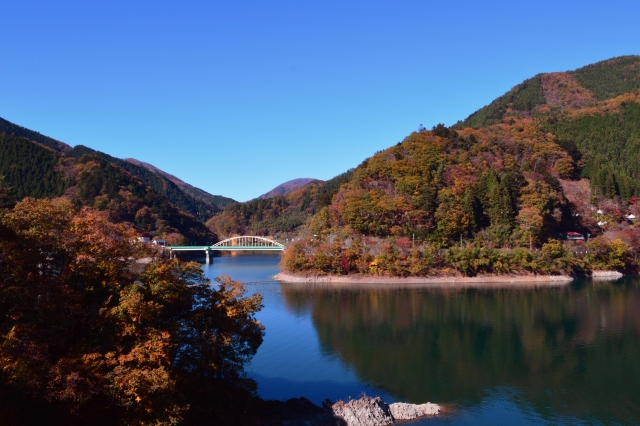
Driving along Okutama Panoramic Road in a camper van for foliage viewing is also popular. Among spots, Tsukiyomi First Parking Lot is Okutama’s premier scenic viewpoint. From here you can overlook the entire lake, with magnificent contrast between foliage of mountains across the lake and blue water surface. Walking on the floating bridges spanning the lake (Mugiyama and Tomeura floating bridges) gives a mysterious sensation of walking among foliage floating on water.
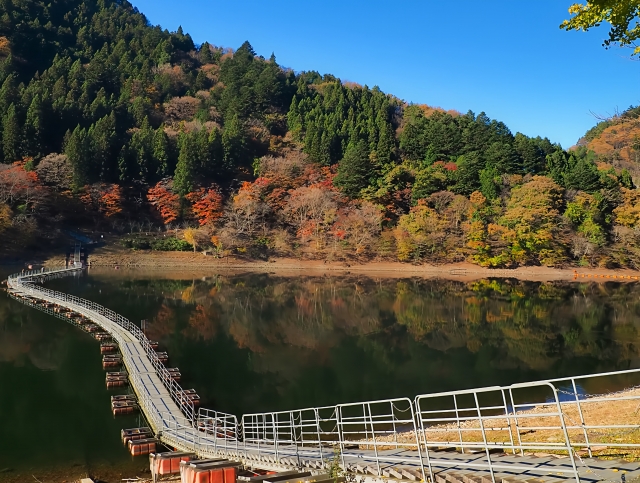
About 2 hours from Chuo Expressway Hachioji IC via Ome Kaido. Around the lakeside are many free parking lots where camper vans can park without problems. Japanese macaques and deer inhabit Okutama’s mountain forests, sometimes showing themselves roadside in early morning or evening. Wild bird watching of waterfowl like ducks and raptors like eagles and hawks is possible by the lake. The floating bridges (drum bridges) sway, requiring careful walking.
Famous Waterfall Surrounded by Primeval Forest “Hossawa Falls”
Hossawa Falls, surrounded by primeval forest unthinkable for Tokyo, is a famous 60m waterfall and the only Tokyo site selected for “Japan’s 100 Famous Waterfalls.” From mid to late November, maple and katsura around the falls color, creating magnificent scenery contrasting with the clear waterfall basin.
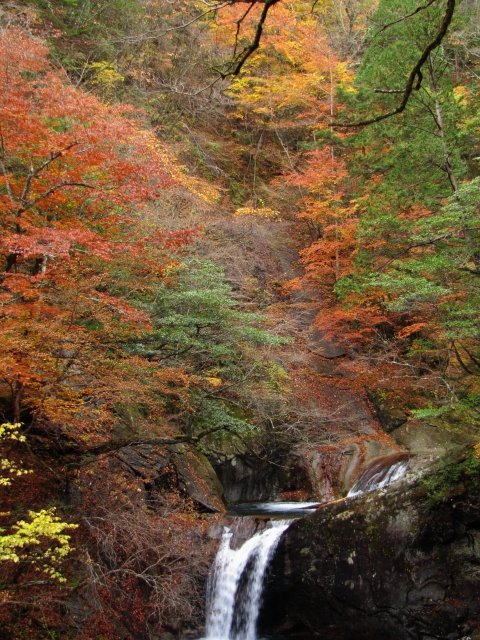
The recommended route is hiking along the Akigawa Promenade while enjoying ravine foliage. The one-way approximately 20-minute walkway is relatively well-maintained, allowing enjoyment of stream murmurs and bird songs along the way. Reaching the falls, negative ion-rich air and foliage reflected on moss-covered rocks heal fatigue.
About 1 hour 20 minutes from Chuo Expressway Hachioji IC via Akigawa Kaido. The parking lot at the falls entrance is small with about 28 spaces, but several camper van-sized vehicles can park. However, during foliage season it often fills from early morning, so early arrival is best. While monkeys and deer inhabit forests around the falls, they rarely appear during daytime. Japanese stream toad songs can be heard at streams, with yamame swimming in streams. Hinohara Village has roadside stations and day-trip hot spring facilities, allowing enjoyment of foliage hunting and hot springs together.
【Kanagawa Prefecture】Touring Hakone and Tanzawa Spectacular Views
Mt. Fuji and Foliage Performance “Lake Ashi”
Lake Ashi, one of Kanto’s premier scenic areas where you can view Mt. Fuji and autumn foliage simultaneously. Foliage around the 723m elevation lakeside begins coloring earliest in the Hakone area, typically coloring from mid-October with peak in early November. Brocade woven by diverse tree species including maple, Japanese maple, mizunara oak, beech, and larch is magnificent combined with grand Hakone outer rim mountain scenery.
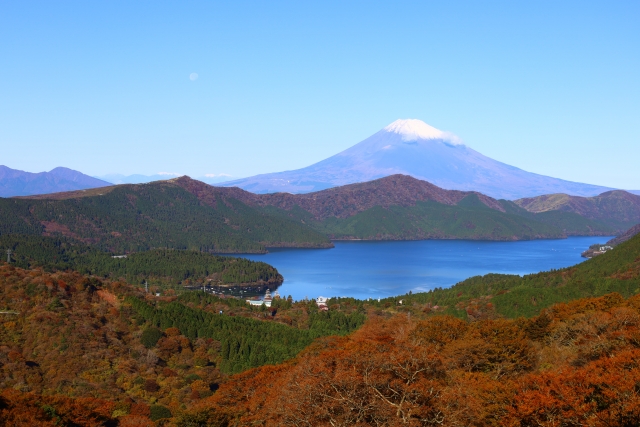
At Moto-Hakone and Onshi Park on the lakeside, spectacular views of Mt. Fuji and autumn foliage across Lake Ashi can be seen in fine weather. This “Inverted Mt. Fuji” collaboration with autumn leaves is a popular photography spot visited by many photographers. Taking sightseeing cruise boats (pirate ships), you can view 360-degree brocade of surrounding mountains from the lake, while from Mt. Komagatake summit you can overlook entire Hakone autumn foliage panorama.
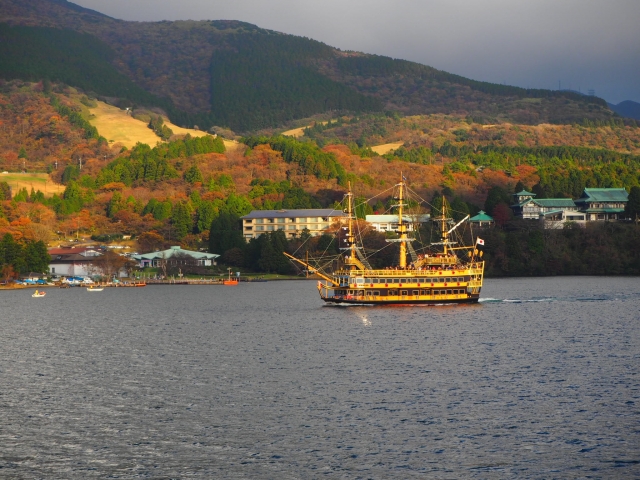
About 1 hour from Tomei Expressway Atsugi IC via Odawara-Atsugi Road and Route 1. Around Lake Ashi are many paid parking lots, but foliage season holidays see congestion, so early arrival at 5-6 AM is recommended. Around Hakone, deer population density is high, with animals sometimes appearing on roads after evening requiring careful driving. Also, waterfowl like ducks and swans visit the lake, with squirrels and Japanese macaques spotted in forests. Hakone has abundant hot spring facilities and RV parks, making it ideal as a car camping base.
Dam Lake and Foliage New Famous Spot “Lake Miyagase”
Lake Miyagase, an artificial lake created by Miyagase Dam completed in 2000, has recently attracted attention as a new autumn foliage spot. From mid to late November, the lakeside surrounded by deep green colors beautifully. Retaining vestiges of Nakatsu Ravine once called “Kanto’s Yabakei,” deciduous trees show vivid colors in autumn.
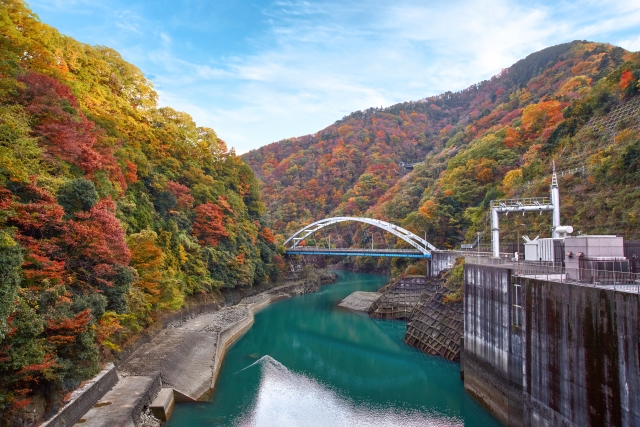
Tourism facilities like “Aikawa Park” and “Toriihara Fureai no Yakata” are developed by the lakeside, with foliage enjoyable from road trains and cruise boats. Water discharge directly under the dam is held on Wednesdays, 2nd Sundays, and 2nd & 4th Fridays, with spectacular collaboration of water spray falling from 70m height and autumn foliage. The deep red of enkianthus planted on lakeside slopes is magnificent, offering gradations enjoyable with diverse tree species including maple, itaya maple, and konara oak.
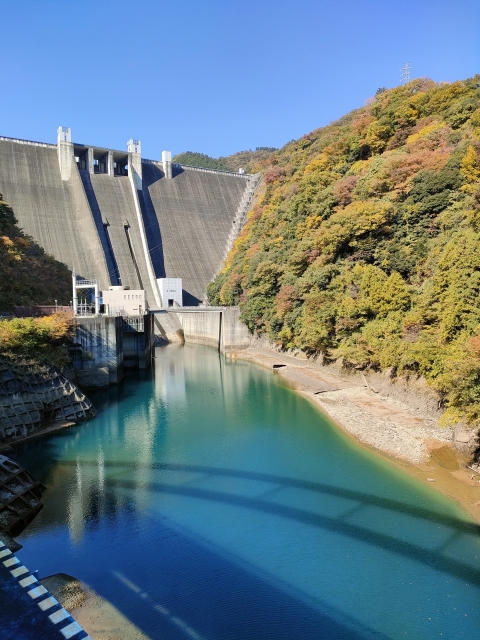
About 30 minutes from Ken-O Expressway Ken-O Atsugi IC. Around the dam at Miyagase Lakeside Park are free parking lots where camper vans can park safely. Tanuki and foxes inhabit forests around the lake, with migratory mandarin ducks sometimes arriving. Cases of encountering deer on roads at night exist, requiring particular caution when driving after sunset. From late November, winter events like giant Christmas tree lighting are held, enjoyable together with autumn foliage.
✓ Pre-check height & size restrictions
✓ Utilize roadside stations & RV parks
✓ Be careful on narrow roads & mountain paths
✓ Drive especially carefully in Okutama & Hakone
✓ After evening is their active time
✓ Watch for animals jumping onto roads while driving
✓ Walk on designated paths
✓ Maintain nature conservation spirit
🍁 Kanto Autumn Foliage RV Travel FAQ
Enjoying Comfortable Foliage Hunting in a Camper Van
The Charm of Autumn Foliage Tours by Camper Van
How did you find our guide to 8 autumn foliage spots scattered throughout Kanto’s suburbs and mountainous areas? Some may be surprised to discover such rich autumn foliage scenery exists in areas easily accessible from Tokyo, Kanagawa, Chiba, and Saitama near central Tokyo.
Five Advantages Unique to Camper Vans
1. Freedom from Time Constraints Typical day trips require early morning departure to avoid traffic and returning home by evening. However, camper vans allow staying overnight at roadside stations or RV parks and enjoying foliage with the sunrise. Being able to visit popular spots during quiet times before crowds is a major advantage.
2. Your Vehicle is Your Accommodation Without being bound by hotel or ryokan reservations, flexible route changes are possible according to daily mood and weather. The freedom to say “The weather’s good today, let’s visit one more spot” becomes reality. As long as you secure a place for car camping, travel schedules expand infinitely.
3. Relax in Private Space When tired from foliage hunting walks, you can immediately relax inside your vehicle. Brew warm coffee or eat packed lunches. Having your own private space lets you enjoy travel at your own pace without exhaustion from tourist area crowds.
4. No Luggage Worries While luggage quantity concerns exist in normal travel for camera equipment, warm clothing, and souvenirs, camper vans eliminate this worry. Being able to bring full photography equipment including tripods and telephoto lenses is a major benefit for those who enjoy foliage photography.
5. Flexible Response to Weather Changes Mountain weather changes easily. Even in sudden rain, you can take shelter inside while replanning movement to the next spot. Also, chances increase to encounter fantastic foliage scenery from weather conditions like early morning fog and seas of clouds.
Deepening Understanding of Nature Through Travel
The 8 spots we introduced each have different charms. Yoro Ravine’s ravine beauty, Lake Ashi’s Mt. Fuji and foliage performance, Lake Okutama’s brocade reflected on quiet lake surfaces. These landscapes are nature’s gifts nurtured over many years.
Through foliage hunting, we physically feel seasonal transitions and realize nature’s cycles. Encounters with wild animals like deer, monkeys, and squirrels teach that this region is supported by a rich ecosystem.
Camper van travel brings more than simple tourism. Early morning forest air, night starry skies, bird songs. By car camping, you face nature 24 hours and can sense its breath.
Now, Depart for Autumn Travel
The 2025 foliage season can be enjoyed for a relatively long period from late October to early December. Since coloring times differ by elevation, please plan touring routes visiting multiple spots using the peak calendar introduced in this article as reference.
With the freedom of a camper van, Kanto’s autumn foliage spots will feel surprisingly close. Ravines wrapped in morning mist, lake surfaces dyed by sunset, a cup of coffee under starry skies. Special moments await that you can only encounter through travel unbound by time.
Now, start your engine and head to Kanto’s autumn-colored mountains. Let’s go create memorable autumn foliage experiences together with your camper van.
